Top 30 ways of using plants and plant parts in your game Part 2
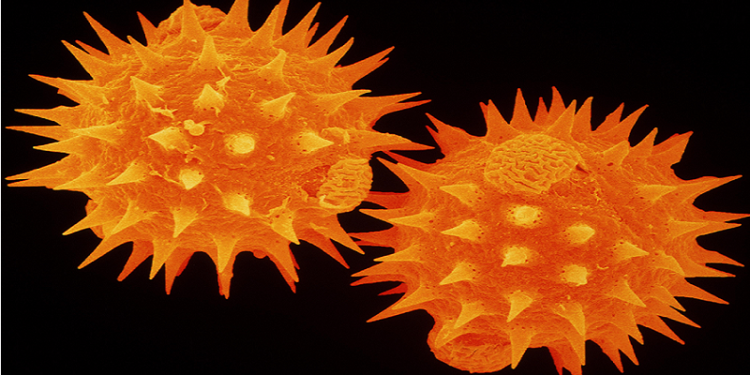
(Author’s note: this was a thought experiment to see how plants and plant parts that are used in everyday life could be incorporated into a game. This is part 2 of 3)
A world’s flora can add interest to a world by giving adventure, depth, and flavor to the world. Unfortunately, it can be far too easy to bypass this detail in your gaming world by excluding how interesting and amazing plants and even sometimes their individual parts can be. Here’s the second 10 ways of using plants and plant parts in your game.
To begin with, let’s start this article with the understanding that it is going to play fast and loose with the concept of what plants are. Mushrooms (even though they’re fungi), seeds, pollen, stems, and the entire plant itself, as well as coral (which seems to be something between a plant and an animal) and seaweed may considered to all be fair game for these articles.
11. As an emergency canteen
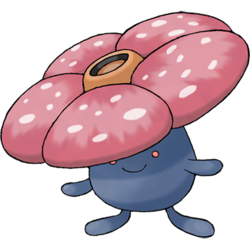 There are a wide variety of plants that store water, most are in the succulent family (cacti, aloe vera, Impatiens, etc.) Furthermore there is the Rafflesia Arnoldii. It is a beautiful parasitic plant (though some classify it as a fungi) that exudes a pungent smell and has no leaves, stems or roots. The large center can hold six to seven quarts of water. In the Pokémon series, the vileplume is based off of this plant. If you go a similar route you might have a canteen that can follow you around. And who knows? If it likes the PC, it may have a new plant type monster as a pet.
There are a wide variety of plants that store water, most are in the succulent family (cacti, aloe vera, Impatiens, etc.) Furthermore there is the Rafflesia Arnoldii. It is a beautiful parasitic plant (though some classify it as a fungi) that exudes a pungent smell and has no leaves, stems or roots. The large center can hold six to seven quarts of water. In the Pokémon series, the vileplume is based off of this plant. If you go a similar route you might have a canteen that can follow you around. And who knows? If it likes the PC, it may have a new plant type monster as a pet.
12. As a way of solving a crime
Pollen, dust, cockleburs, leaves and other plant parts can be carried from one location to another. How this can be used in crime scene investigation (CSI) is that a PC or NPC will notice that something doesn’t belong there and only people who traveled through a certain location or select few locations. And a person (or people) who has these on him (or her) can deny that they’ve been there, but through a combination of distance, and eyewitnesses saying they were nearby, it can be determined they may have been a party to the crime. If the item in question only grows in one specific location, for instance, a nearby hillside, a greenhouse, or a few plants at the victim’s house, then unless the alibi is irrefutable, the prosecution has a pretty strong case. This type of thing has happened a few times on the old Lone Ranger TV show.
13. As pieces of biological art
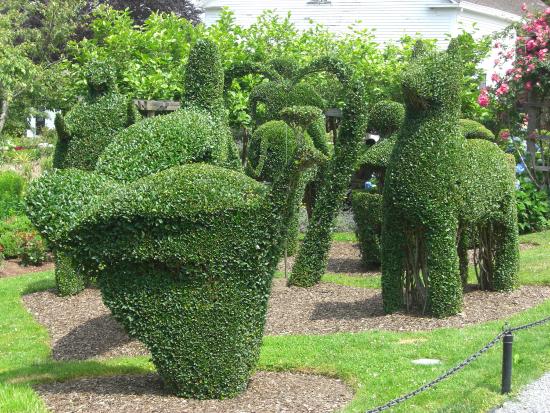 There are floats in the Thanksgiving and Christmas parades. Very often the announcers tell how many different types of plants make up the float, among which are seeds, flower stamen, nuts, seeds, and fruits. The work is painstaking, and time consuming, but to the many volunteers who do it year in and year out, it is a labor of love. Furthermore, there are carefully manicured gardens, complete with masterfully pruned shrubs into various objects, arches with flowers grown on them, and meticulously arranged flower beds. In a fantasy setting such things could be kept alive indefinitely.
There are floats in the Thanksgiving and Christmas parades. Very often the announcers tell how many different types of plants make up the float, among which are seeds, flower stamen, nuts, seeds, and fruits. The work is painstaking, and time consuming, but to the many volunteers who do it year in and year out, it is a labor of love. Furthermore, there are carefully manicured gardens, complete with masterfully pruned shrubs into various objects, arches with flowers grown on them, and meticulously arranged flower beds. In a fantasy setting such things could be kept alive indefinitely.
14. Offensive Capabilities.
Obvious but worth mentioning are weapons such as nun-chucks / three-part-staff, tonfas, staves, bows/ arrows, the hafts of many pole arms, etc. One weapon that most would not readily think of is the boomerang. As a tool, a hammer can easily be made of wood. Whether or not it would work as well as a metal headed weapon would depend not only on the game system you’re using, but how proficient the user is with said weapon as well. Similar to this is the mace, though it probably wouldn’t be so “spiky” if it were made of wood. If the head of certain weapons: an axe, metal hammer, pick, etc. get removed the hafts can make good makeshift weapons. But so too would the stake that one would use to drive through the heart of a vampire.
If you’re wanting to examine siege weaponry, catapults / trebuchets, rams, and the like were often built with large trees and ropes made (likely) of hemp or vines.
 Wooden Swords: In Japanese culture, there is training with the bokken, which while may not usually be deadly, can pack quite a wallop. They are used as an inexpensive and relatively safe substitute for a real sword in several martial arts such as aikido, kendo, iaido, kenjutsu and jodo. Its simple wooden construction demands less care and maintenance than an actual sword. In addition, training with one isn’t as deadly as using a sharpened metal sword, both for the user and other practitioners nearby. While its use has several advantages over use of a live edged weapon, it can still be deadly, and any training with a bokken should be done with due care. Injuries occurring from bokken are very similar to those caused by clubs and similar battering weapons and include compound fractures, ruptured organs, and other such blunt force injuries. Adding magic atop of it whereby it can actually count as metal or as a true blade can make such a wielder a formidable force to be reckoned with.
Wooden Swords: In Japanese culture, there is training with the bokken, which while may not usually be deadly, can pack quite a wallop. They are used as an inexpensive and relatively safe substitute for a real sword in several martial arts such as aikido, kendo, iaido, kenjutsu and jodo. Its simple wooden construction demands less care and maintenance than an actual sword. In addition, training with one isn’t as deadly as using a sharpened metal sword, both for the user and other practitioners nearby. While its use has several advantages over use of a live edged weapon, it can still be deadly, and any training with a bokken should be done with due care. Injuries occurring from bokken are very similar to those caused by clubs and similar battering weapons and include compound fractures, ruptured organs, and other such blunt force injuries. Adding magic atop of it whereby it can actually count as metal or as a true blade can make such a wielder a formidable force to be reckoned with.
 Pepper Spray’s active ingredient is capsaicin, a chemical derived from chilis, which are finely ground and then extracted into ethanol, a solvent, which is then evaporated. What remains is a waxlike resin capable of causing inflammation which can temporarily blind an opponent, cause them to have difficulty breathing, and, depending on the dosage and reaction to it, even cause the person’s skin to get burns or cause them to die. Ironically enough, even though pepper spray can be used as a weapon, for those with severe pain, it can provide temporary relief.
Pepper Spray’s active ingredient is capsaicin, a chemical derived from chilis, which are finely ground and then extracted into ethanol, a solvent, which is then evaporated. What remains is a waxlike resin capable of causing inflammation which can temporarily blind an opponent, cause them to have difficulty breathing, and, depending on the dosage and reaction to it, even cause the person’s skin to get burns or cause them to die. Ironically enough, even though pepper spray can be used as a weapon, for those with severe pain, it can provide temporary relief.
On a similar note, there’s the curry bomb, which is a grenade filled with phosphorous, red hot chilies and pepper, this bomb can bring victims to their knees in seconds.
Of course if you have an enemy captured, you could always buy hottest hot peppers and tell them that if they don’t cooperate that you’ll force their mouth open and stuff their mouth full of them. Some NPCs may be unimpressed, yet if they have an allergy to the peppers, in the form of it being unusually spicy for their race or it simply gives them stomach problems, it may cause them to tell the PCs what they know. Whether the tale that they spin is true or not, is another matter entirely.
15. Defensive Capabilities
 Barbed Wire: The Scottish Thistle is a thorny little cactus flower that possesses hundreds of sharp edges and barbs. It is responsible for saving Scotland from a sneak attack by barefooted Norsemen during the 13th century who cried out in pain from stepping on the thistle which alerted the Scottish of their invasion and thereby thwarted their plan. Other thorny bushes, pine cones, wooden caltrops, a potato or other root vegetable with several nails or spikes stuck through it, etc. can be used to similar effect if it’s dark and the enemies aren’t expecting them.
Barbed Wire: The Scottish Thistle is a thorny little cactus flower that possesses hundreds of sharp edges and barbs. It is responsible for saving Scotland from a sneak attack by barefooted Norsemen during the 13th century who cried out in pain from stepping on the thistle which alerted the Scottish of their invasion and thereby thwarted their plan. Other thorny bushes, pine cones, wooden caltrops, a potato or other root vegetable with several nails or spikes stuck through it, etc. can be used to similar effect if it’s dark and the enemies aren’t expecting them.
Entanglement
There are a variety of plants that can be used to entangle opponents. A length of vine and some coconuts or stones can make a crude, but workable bola. Furthermore, there are a wide variety of plants that grab at the ankles – thorny branches, plants with long, supple leaves, and even grasses are among the more common culprits. Maybe using these as a base, a druid could create a spell akin to black tentacles.
Entanglement doesn’t necessarily mean on land either; seaweed underwater can effectively make a character’s movement zero.
Armor: The elves, ever the masters of the woods, have developed leaves to become armor for them with the same statistics of leather. Another option is Darkwood armor which is rare magic wood that has the hardness of normal wood but weighs half as much. Wooden or mostly wooden weapon (such as a bow, an arrow, or a spear) made from darkwood are considered to be masterwork items. The armor check penalty of a darkwood shield is lessened by 2 compared to an ordinary shield of its type. There’s also the following list from the giant tip for D&D 3.5
- Bluewood (Unapproachable East): same as masterwork metal, higher cost.
- Bronzewood (A&EG): same as metal, except -10% weight.
- Darkleaf (A&EG, Eberron): +1 Dex bonus, -2 ACP, -5% ASF, lighter weight category.
- Vine (Secrets of Xendrik): leather armor that you have to water or it dies.
DMs might also want to experiment with a natural barkskin that can’t be removed from the character because it’s been grown on their body or a breastplate made of some sort of hard wood, that works as well as steel in most respects, but has other problems – maybe increased spell failure or something due to its restrictive nature.
16. As a monster.
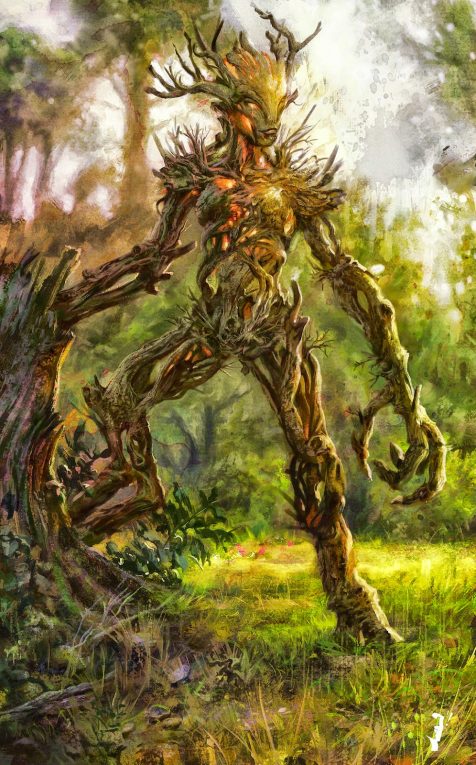 Even though plant based monsters are rare in the form of giant Venus fly traps, veggie pygmies, treants, spriggans, shambling mounds (real life versions here and here) and the like, even they can be made more interesting as listed in my other article. Crafty DMs might want to take a look at the monsters in collectable card game Magic: the Gathering for inspiration to provide as enemies for your PCs to face. Though it should be noted that not all “monsters” need to move at all. The classic African Acacia tree, provides food and habitats for a variety of animals, from hoofed mammals and birds to countless species of insects. Most species of this tree have thorns, the first layer of defense. If herbivores are determined to eat it, it has an interesting defense mechanism, whereby it releases a gas telling other nearby trees to produce more tannin, which is toxic, even deadly in high enough doses. If that’s not enough of a defense, the occupants of the trees, the ants, will also attack anything foolhardy enough to decide to make the tree’s leaves a meal.
Even though plant based monsters are rare in the form of giant Venus fly traps, veggie pygmies, treants, spriggans, shambling mounds (real life versions here and here) and the like, even they can be made more interesting as listed in my other article. Crafty DMs might want to take a look at the monsters in collectable card game Magic: the Gathering for inspiration to provide as enemies for your PCs to face. Though it should be noted that not all “monsters” need to move at all. The classic African Acacia tree, provides food and habitats for a variety of animals, from hoofed mammals and birds to countless species of insects. Most species of this tree have thorns, the first layer of defense. If herbivores are determined to eat it, it has an interesting defense mechanism, whereby it releases a gas telling other nearby trees to produce more tannin, which is toxic, even deadly in high enough doses. If that’s not enough of a defense, the occupants of the trees, the ants, will also attack anything foolhardy enough to decide to make the tree’s leaves a meal.
17. As stress relief.
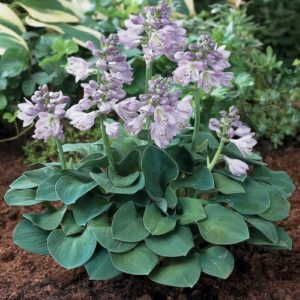 This is a guilty pleasure I have of my own. Hostas, are a type of flower that, at a certain stage of its formation gets filled with air. If squeezed, it make a pleasant popping sound, something similar to that of bubble wrap. Another plant that could be used for stress relief is the lamb’s ears plant, so soft that you can pet it. Tending plants in a contained garden can also be very therapeutic. Furthermore, many types of aromatherapy are, in essence, plant based.
This is a guilty pleasure I have of my own. Hostas, are a type of flower that, at a certain stage of its formation gets filled with air. If squeezed, it make a pleasant popping sound, something similar to that of bubble wrap. Another plant that could be used for stress relief is the lamb’s ears plant, so soft that you can pet it. Tending plants in a contained garden can also be very therapeutic. Furthermore, many types of aromatherapy are, in essence, plant based.
That’s not counting the stress relief of aromatherapy that can be used in various ways
18. As a shelter
Building materials are another no brainer because in almost every culture wood is used to build houses. Even bricks, in addition to be made of mud or clay, can also contain straw. The elves, in their homeland, literally shape the woods so that their homes in such a way that they are unobtrusive to the growth of the plants, and invisible to anyone looking directly at them, unless they know what they’re looking for. If you want more ideas on how this might play out, see my other article here. Even races such as the dwarves rely heavily on wood to shore up the tunnels… otherwise in a realistic setting they would collapse. However that doesn’t account for the types of shelters PCs may need to build when it comes to surviving in the wilderness. Want some ideas on how they can do it? Check out here.
19. As a way of producing alcoholic beverages
There’s one thing about mankind: if there’s a way of making alcohol out of something, we’ll figure out a way to do it. Even beer is made of hops, a plant. This doesn’t even include odd wines such as dandelion wine, apple wine, and birch sap wine. In your game you could use wines that
20. As a way of producing art
This is a different thing than that biological art listed above. Many of the paint pigments, sculptures, and additives put into pottery are made of plants and plant parts. In doing so these pigments
As you can see there are many interesting and amazing ways that plants can be used in your game. Try to incorporate them into your game and if you’re able to do so, let me know how it turned out. As always, feel free to like, comment, and reshare!




